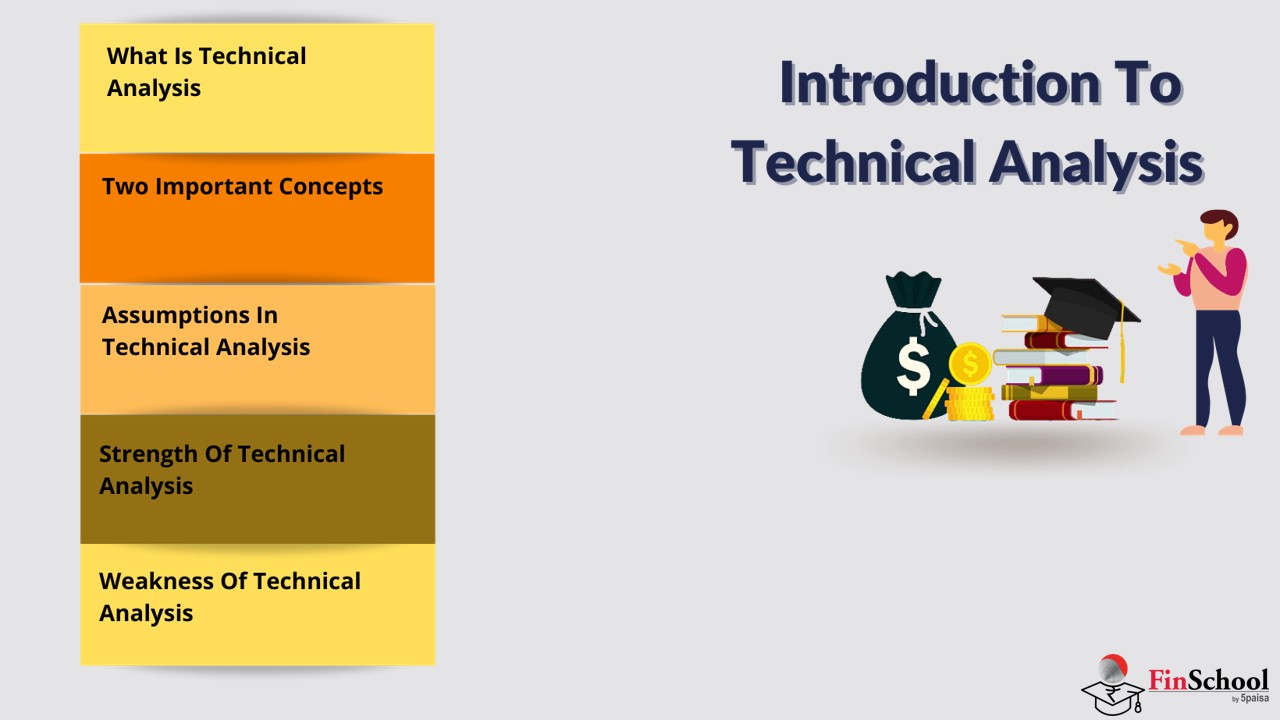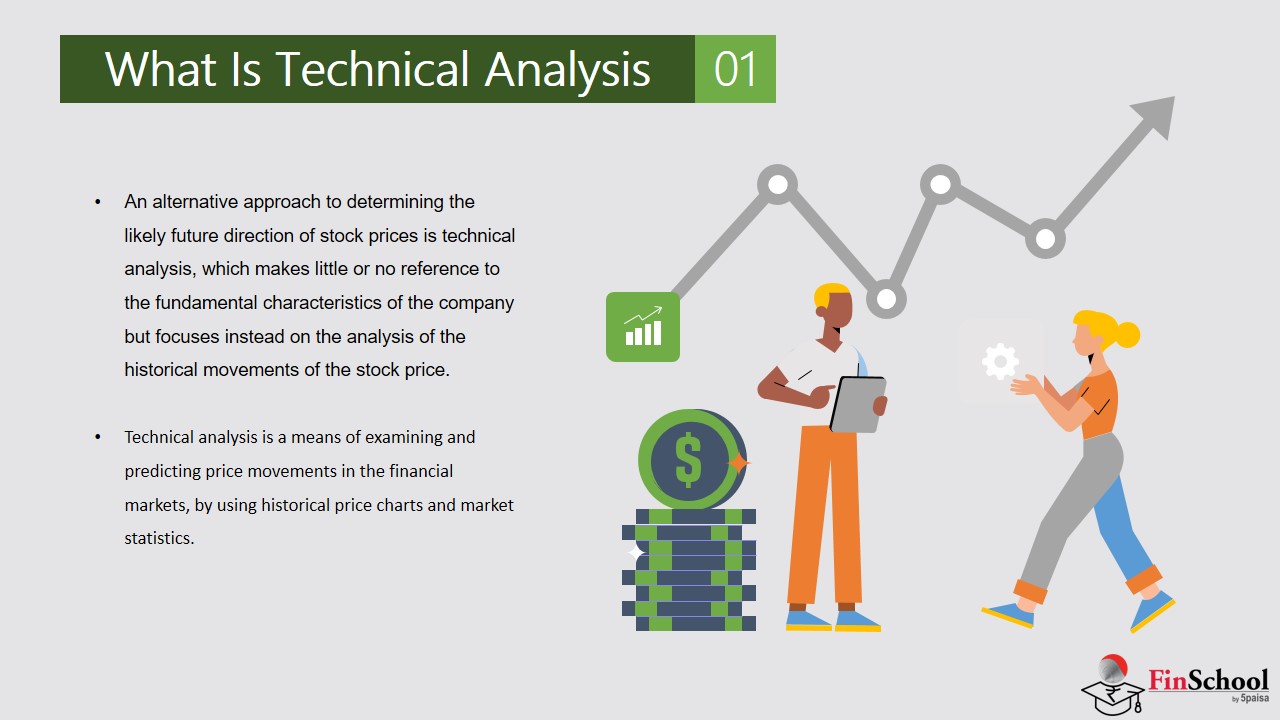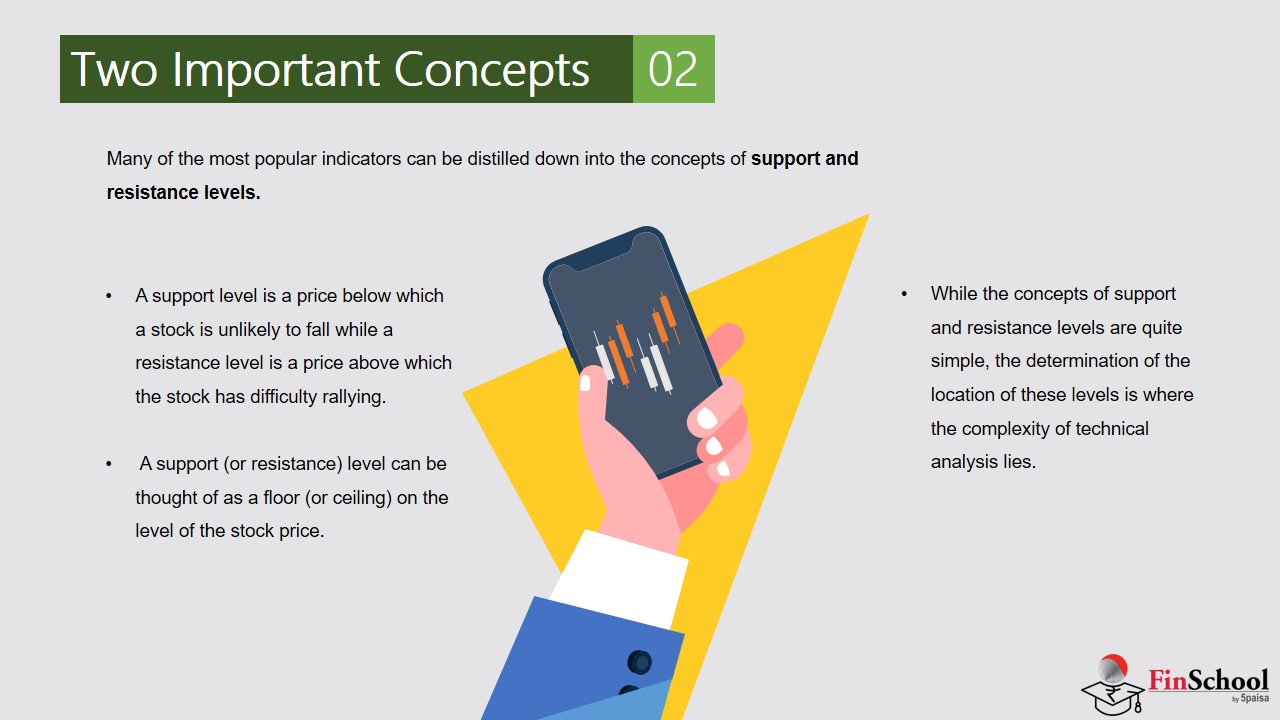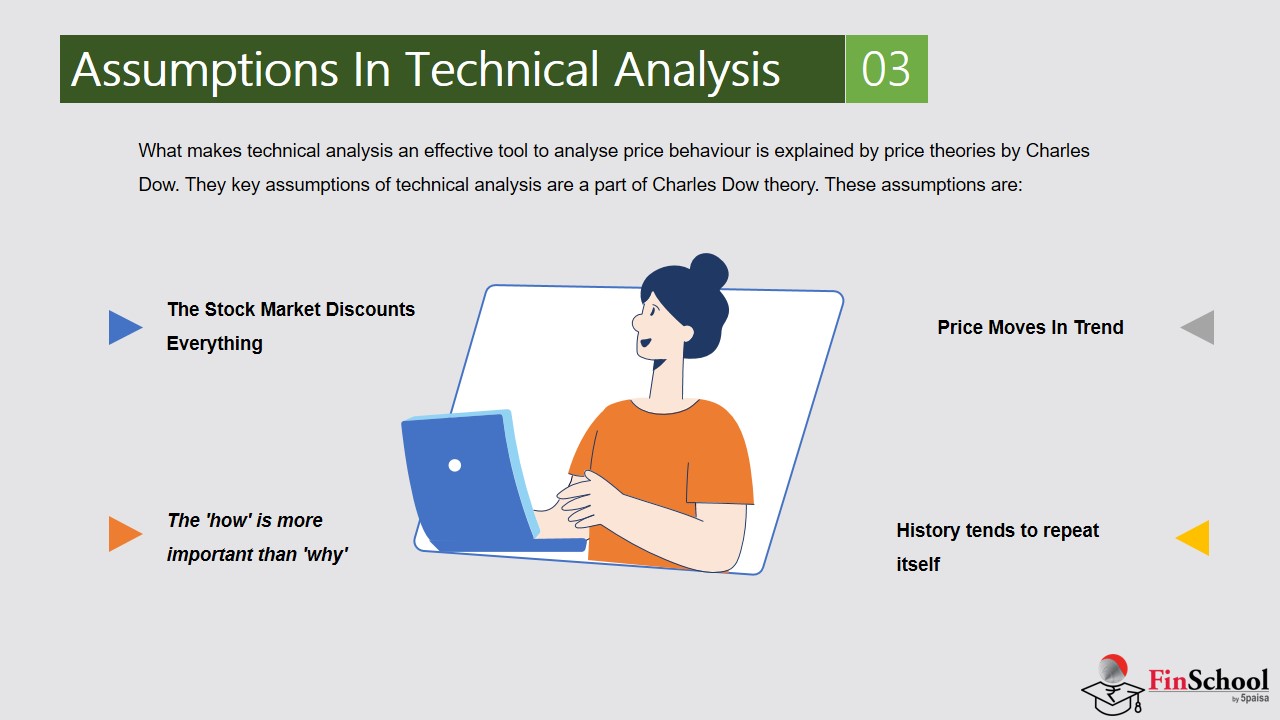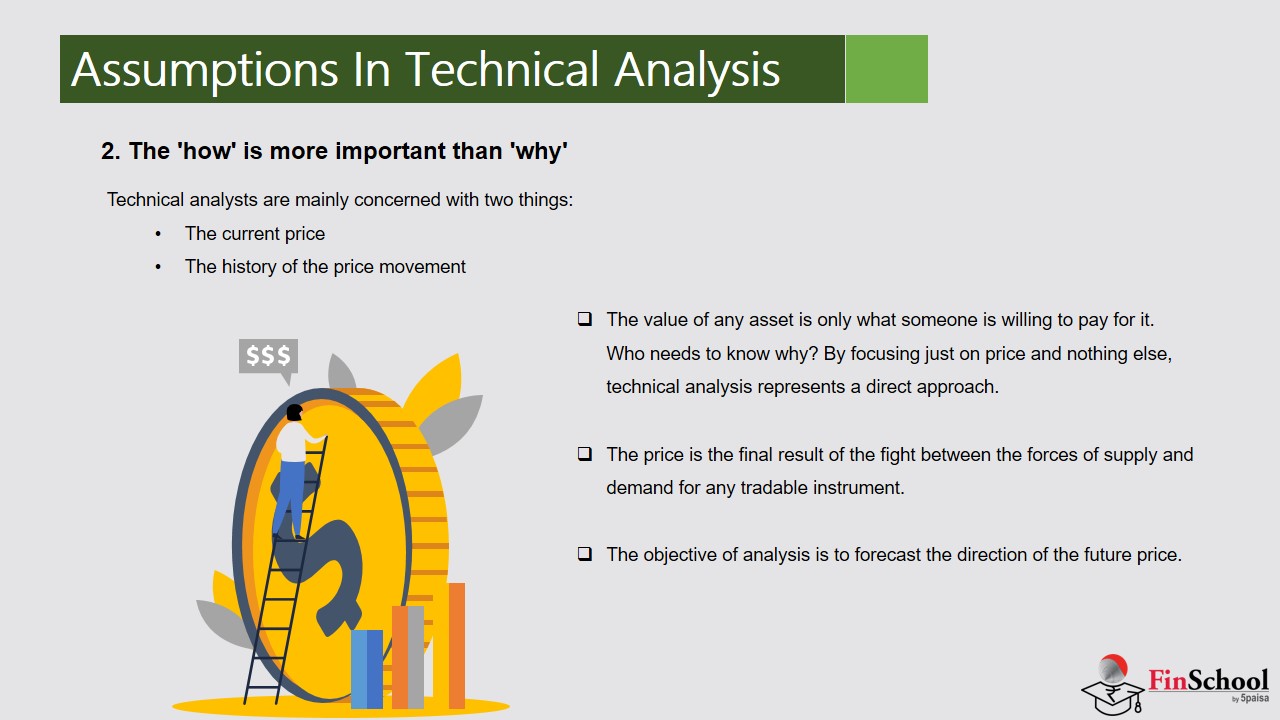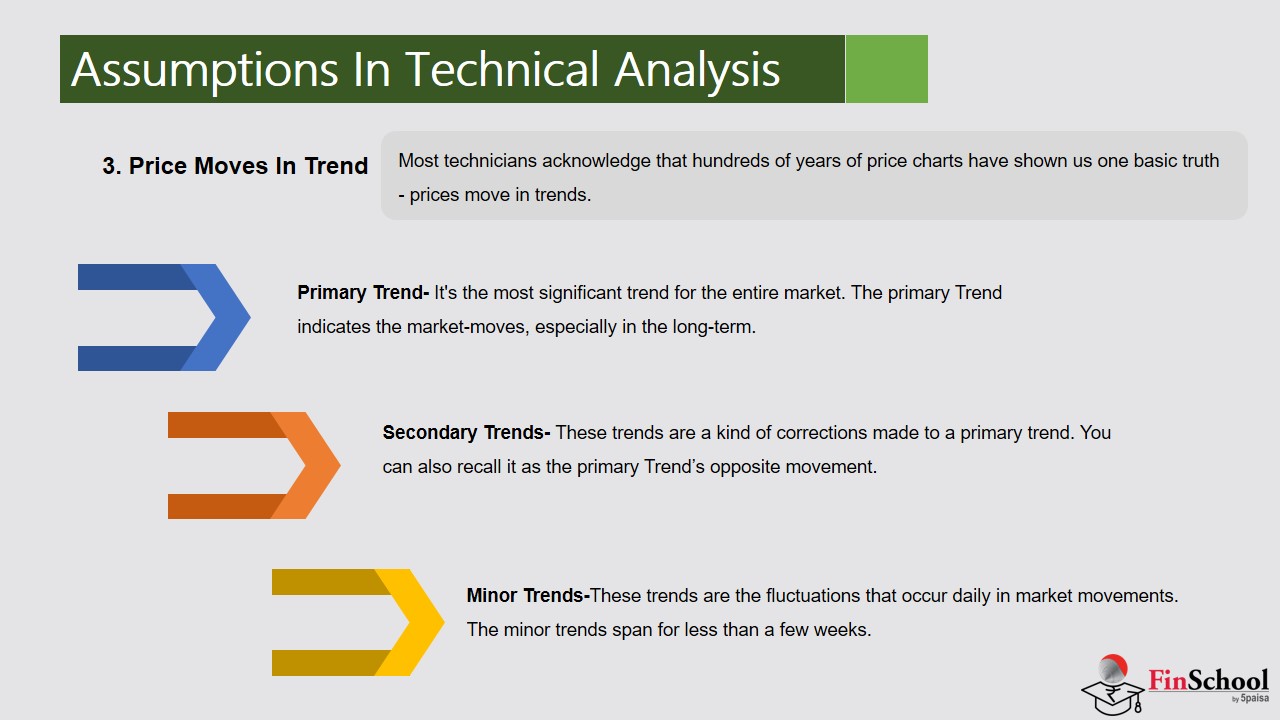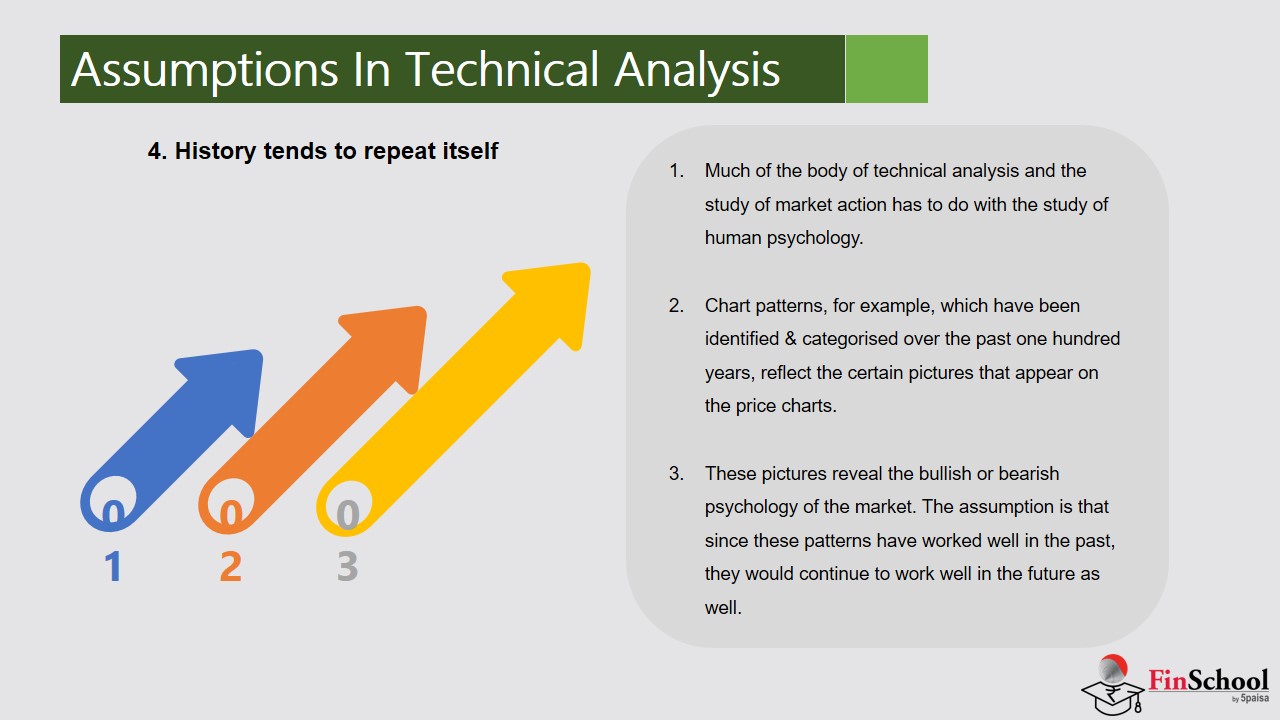- Introduction To Technical Analysis
- Charts
- Line & Bar Charts
- Candlestick Patterns
- Support, Resistance & Trend
- Trend Lines
- Understanding Chart Patterns & Head & Shoulder In Detail
- Double Top & Bottom Pattern In Stock Market - Explained
- Saucers & Spikes
- Continuing Patterns
- Know What Is Price Gaps & Its Types In Stock Market
- Study
- Slides
- Videos
1.1 What is Technical Analysis
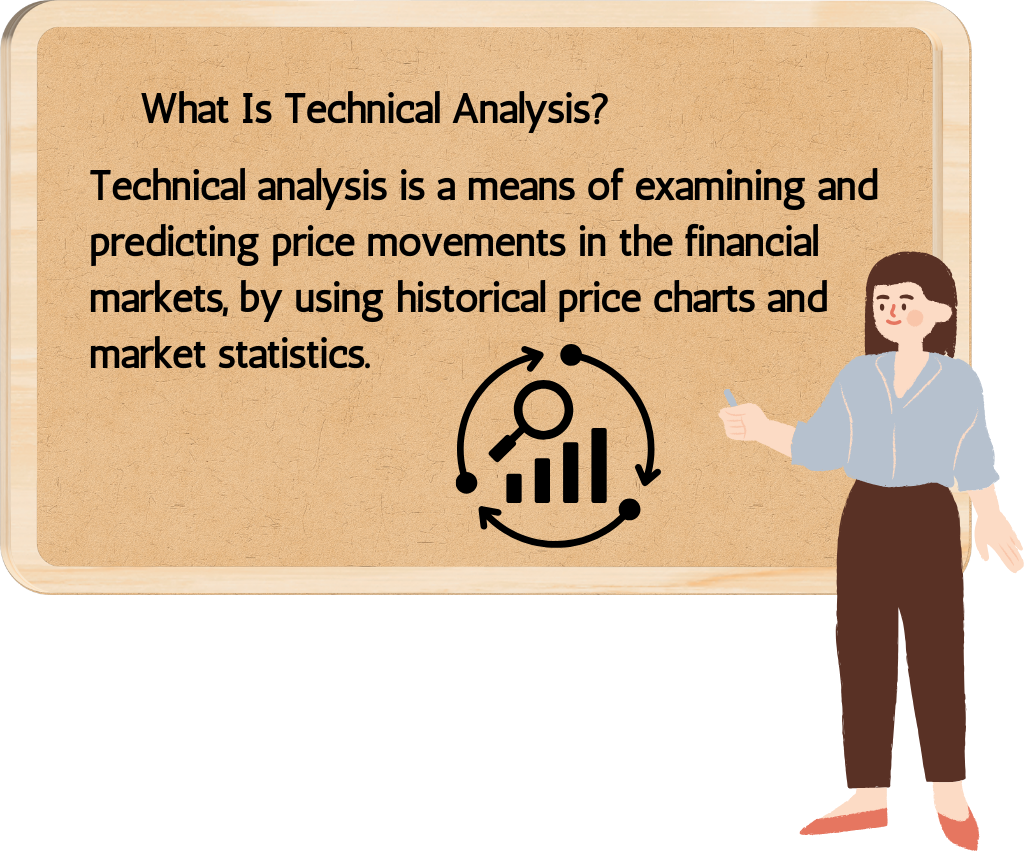
Technical analysis is a powerful tool for navigating the stock market. By understanding how to do technical analysis of stocks, traders can identify trends, patterns, and potential opportunities. Whether you’re focusing on trading technical analysis or aiming to learn technical analysis specifically for the Indian stock market, mastering techniques like chart reading and indicator application is key. Dive into the world of stock market technical analysis and unlock strategies to make informed decisions.
An alternative approach to determining the likely future direction of stock prices is technical analysis, which makes little or no reference to the fundamental characteristics of the company but focuses instead on the analysis of the historical movements of the stock price. The underlying concept of technical analysis is that certain patterns of price movements in financial assets repeat in predictable ways, and that these patterns can be identified by analyzing the graph of the evolution of the asset price over time (technical analysis is sometimes called charting).
Thus, Technical analysis is a means of examining and predicting price movements in the financial markets, by using historical price charts and market statistics. It is based on the idea that if a trader can identify previous market patterns, they can form an accurate prediction of future price trajectories.
1.2 Two Important Concepts
Many of the most popular indicators can be distilled down into the concepts of support and resistance levels.
A support level is a price below which a stock is unlikely to fall while a resistance level is a price above which the stock has difficulty rallying. A support (or resistance) level can be thought of as a floor (or ceiling) on the level of the stock price. The movement of a stock price through a support or resistance level is considered to be a significant indicator of the strength of the directional movement. Once broken, a previous resistance level often becomes a support level going forward and vice versa.
While the concepts of support and resistance levels are quite simple, the determination of the location of these levels is where the complexity of technical analysis lies. In some cases the establishment of a technical level can be very simplistic-psychological barriers such as the Dow Jones Industrial Average breaking 10,000 or the observation that the stock price has, on several occasions, reached a certain level without going through it.
Other times, a technical level may be determined by the presence of one of many established patters in the graph of the stock price, such as a “pendant,” “channel,” or “head and shoulders” formation.
1.3 Assumptions In Technical Analysis
What makes technical analysis an effective tool to analyse price behaviour is explained by price theories by Charles Dow. They key assumptions of technical analysis are a part of Charles Dow theory. These assumptions are:
-
The Stock Market Discounts Everything- Technical analyst believes that anything that can possibly affect the price- fundamentally, politically, psychologically or otherwise- gets reflected in the price of the stock. Thus, they believe study of price action is all that is required. For example: There could be an investor who has information of good results of a company. Basis his insider information he buy’s the company’s stock in large quantity. While he does this secretively, the price reacts to his actions, revealing to the technical analyst that this could be a good buy.
-
The ‘how’ is more important than ‘why’-
Technical analysts are mainly concerned with two things:
-
-
The current price
-
The history of the price movement
-
The value of any asset is only what someone is willing to pay for it. Who needs to know why? By focusing just on price and nothing else, technical analysis represents a direct approach. The price is the final result of the fight between the forces of supply and demand for any tradable instrument. The objective of analysis is to forecast the direction of the future price. In the above example- where an insider was buying the stock – all the technical analyst would not be interested in questioning why the insider bought the stock as long as he knows how the price reacted to the insider’s action.
-
Price Moves In Trend- Technical analysis is a trend following system. Most technicians acknowledge that hundreds of years of price charts have shown us one basic truth – prices move in trends. If prices moved randomly, it would be extremely difficult to make money using technical analysis.
These trends split up into three categories:
-
Primary Trend- It’s the most significant trend for the entire market. The primary Trend indicates the market-moves, especially in the long-term. Similarly, the duration of primary trends can last for many years. Primary Trend includes three phases; named.
-
Accumulation Phase-When the primary trend beginning happens sloping upward (or downward) like bullish (or bearish).
-
Panic Phase- This phase refers to the time when investors are likely to buy stocks in an extensive amount, which results in significant speculation. However, for investors, it becomes vital to book profits and exit as soon as possible.
-
Public Participation Phase- In this phase, more investors are likely to enter the market as the improvements become visible across business conditions. Similarly, this also triggers a rise (or decline) in prices in the market.
-
-
Secondary Trends- These trends are a kind of corrections made to a primary trend. You can also recall it as the primary Trend’s opposite movement. For instance- the primary trend slopes upwards (creating a Bullish phase), the secondary Trend slopes downward. But secondary trends last hardly for a few months or sometimes weeks.
-
Minor Trends-These trends are the fluctuations that occur daily in market movements. The minor trends span for less than a few weeks.
-
History tends to repeat itself- Much of the body of technical analysis and the study of market action has to do with the study of human psychology. Chart patterns, for example, which have been identified & categorised over the past one hundred years, reflect the certain pictures that appear on the price charts. These pictures reveal the bullish or bearish psychology of the market. The assumption is that since these patterns have worked well in the past, they would continue to work well in the future as well.
This happens because the market participants consistently react to price movements remarkably similar way, every time the price moves in a certain direction. For example, in up trending markets, market participants get greedy and want to buy irrespective of the high price. Likewise, in a downtrend, market participants want to sell irrespective of the low and unattractive prices. This human reaction ensures that the price history repeats itself.
1.4 Strength Of Technical Analysis
Can Be Applied Anywhere
Technical analysis has universal applicability. It can be applied to any financial instrument – stocks, futures and commodities, fi xed-income securities, forex, etc
Direct Approach
The most important advantage of using technical analysis is the fact that it is purely based on price- market price. The traders and the analysts only focus on the price of the stock. They predict the future price based on the historical prices. It helps to keep away the noise.
Demat-Supply and Price Action
Since the analysis is done on the basis of price, the analysts consider demand-supply are the two primary and also only forces affecting the prices. It becomes easy to understand the price movements as no other factors are influencing the price as per the technical analysis. They think that the demand and supply of the share incorporate all other information of the company and the market.
Support and Resistance
Technical analysis is nothing without the support and resistance level. These two levels help the traders understand the price movements and if there is any hint of a trend reversal. This, in turn, helps them act quickly and book profits and trade in the right direction.
Entry and Exit Points
The indicators are really helpful in suggesting the entry and exit points in the market. It helps in saving your hard-earned money by giving early signals which are more or less accurate. Even if you miss some price change or couldn’t be able to track it, these indicators will pop up on the charts to indicate the entry and exit points.
1.5 Weakness Of Technical Analysis
Assumption Not Accurate
Critics of technical analysis argue that history does not exactly repeat itself thus the assumption of the technical analysis itself is not accurate. Since, it is argued that history does not repeat itself, the critics find study of price patterns useless
Ability to Deep Dive is Missing
Technical analysis is limited to studying market trends and lacks the ability to deep-dive into an instrument or an industry to understand its workings. It is at its most relevant and insightful when the market has begun to move a certain way, rather than predicting the movement which needs fundamental background analysis.
Open to interpretation
Technical analysis is a combination of science and art and is always open to interpretation. Even though there are standards, many times two technicians will look at the same chart and paint two different scenarios or see different patterns. Both will be able to come up with logical support and resistance levels as well as key breaks to justify their position. Is the cup half-empty or half-full? It is in the eye of the beholder.
Too late
You can criticize the technical analysis for being too late. By the time the trend is identified, a substantial move has already taken place. After such a large move, the reward to risk ratio is not great. Lateness is a particular criticism of Dow Theory.
Always another level
Technical analysts always wait for another new level. Even after a new trend has been identified, there is always another “important” level close at hand. Technicians have been accused of sitting on the fence and never taking an unqualified stance. Even if they are bullish, there is always some indicator or some level that will qualify their opinion.






